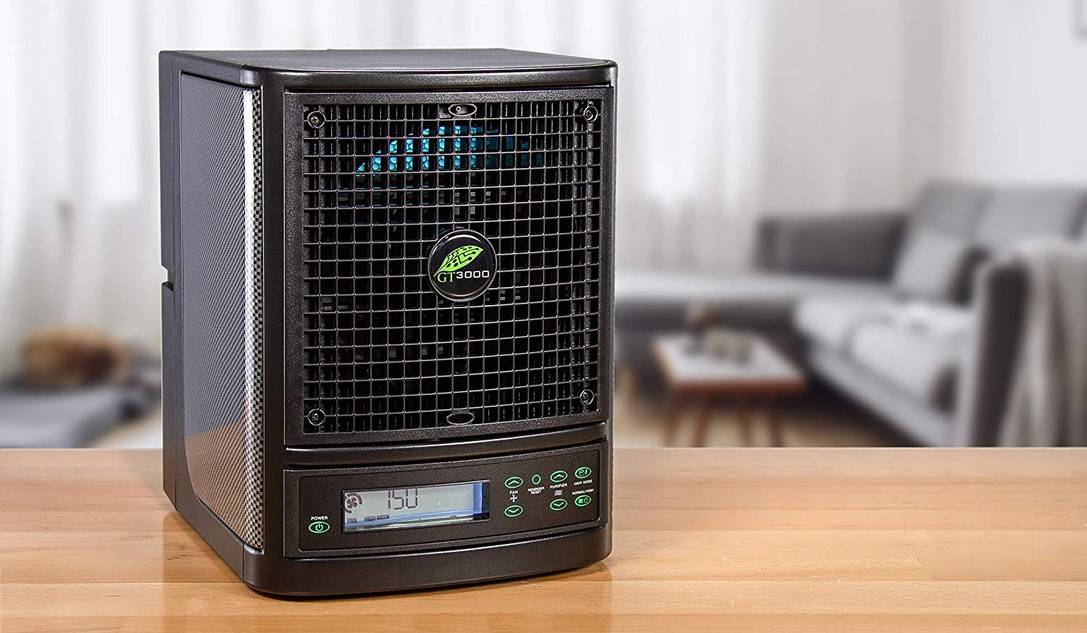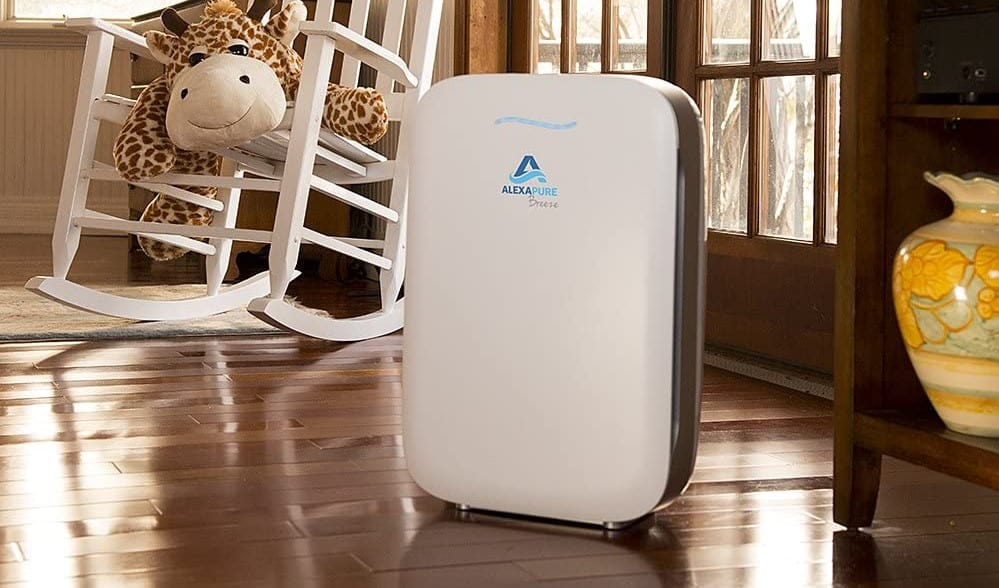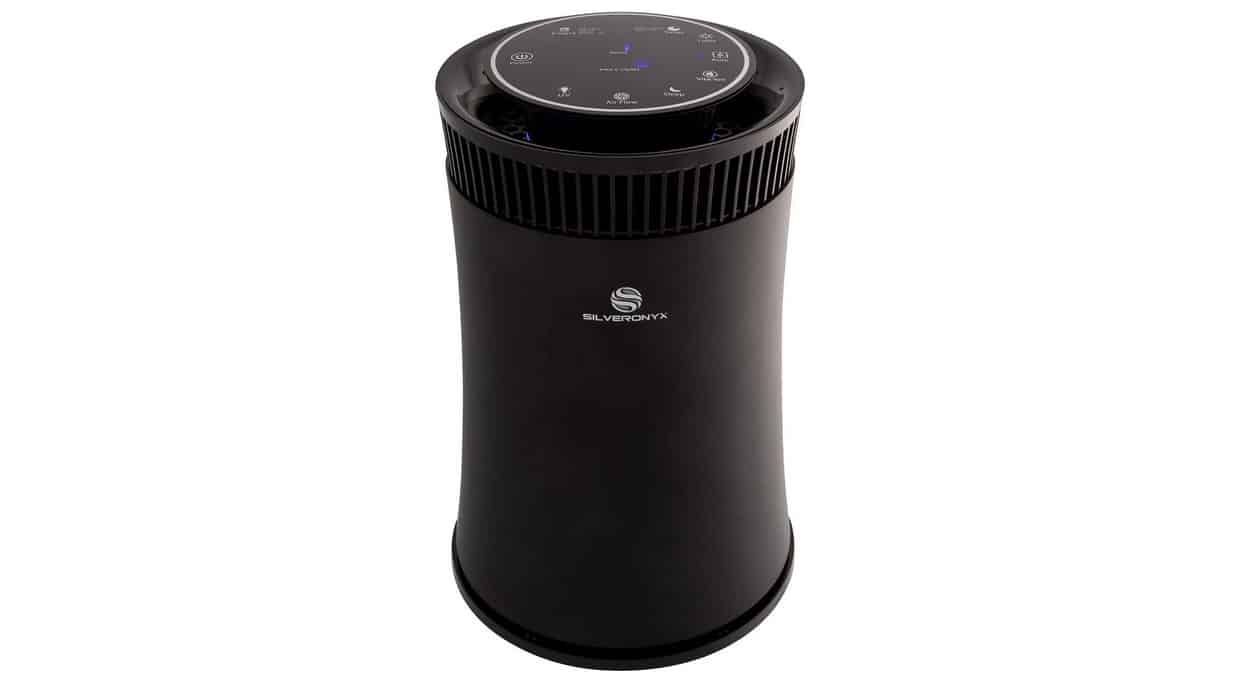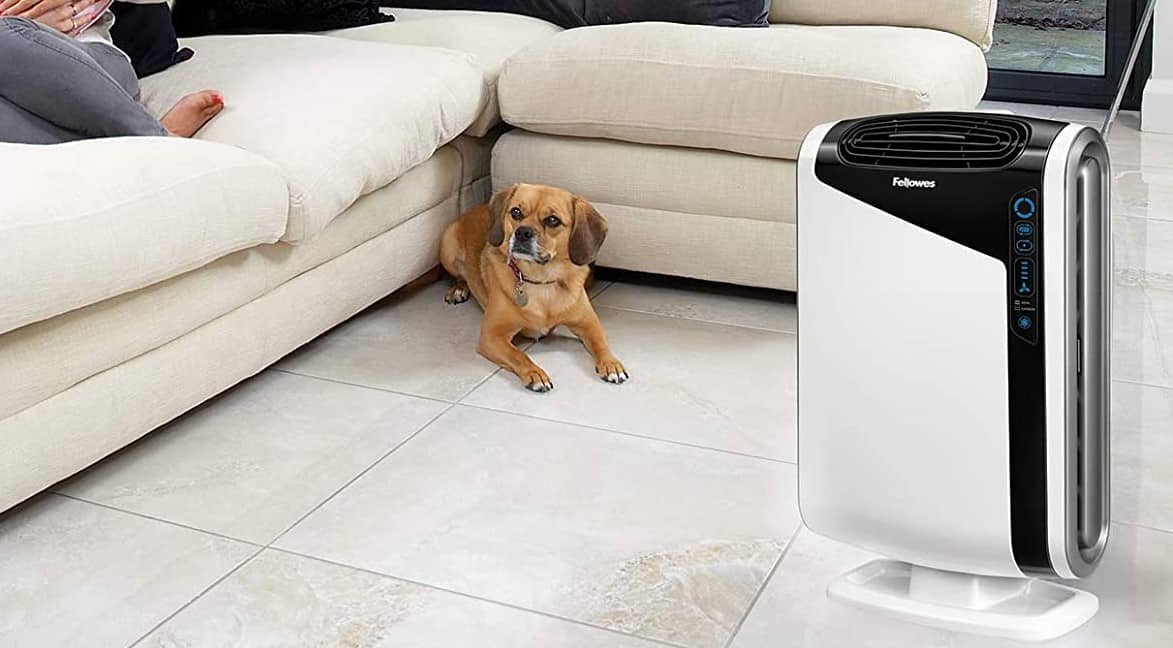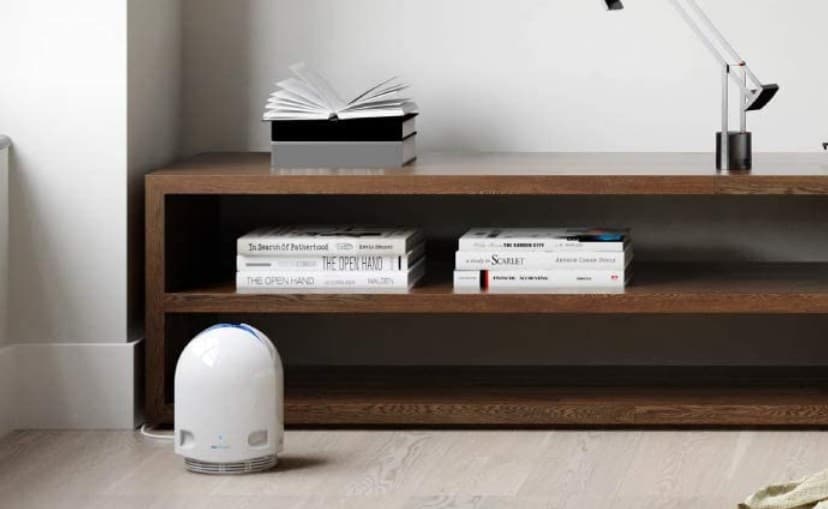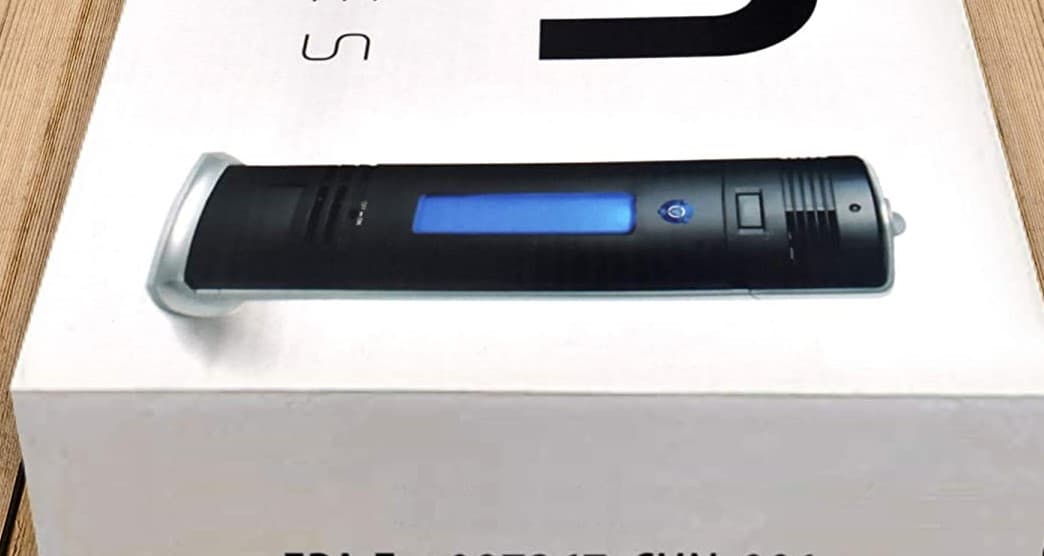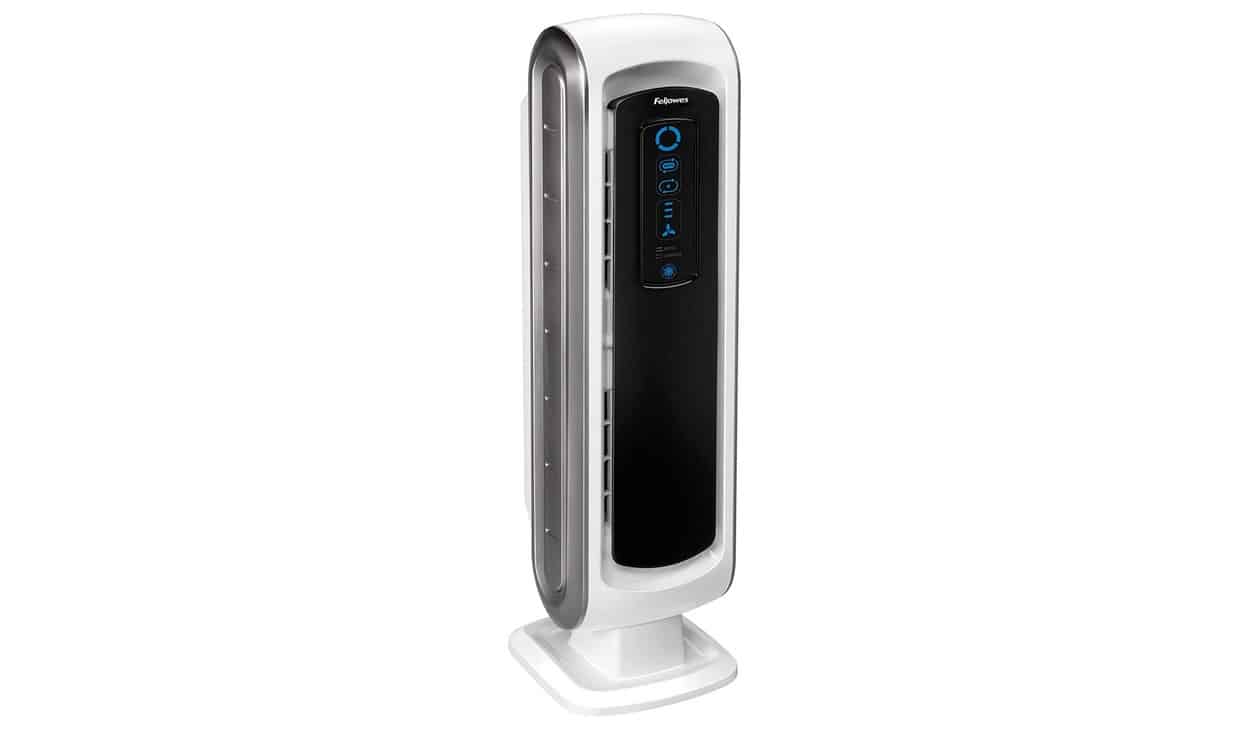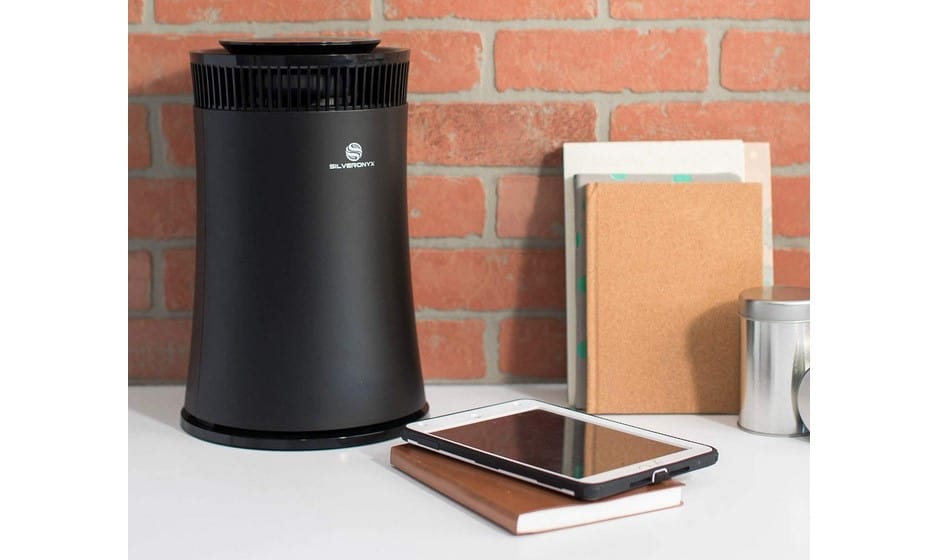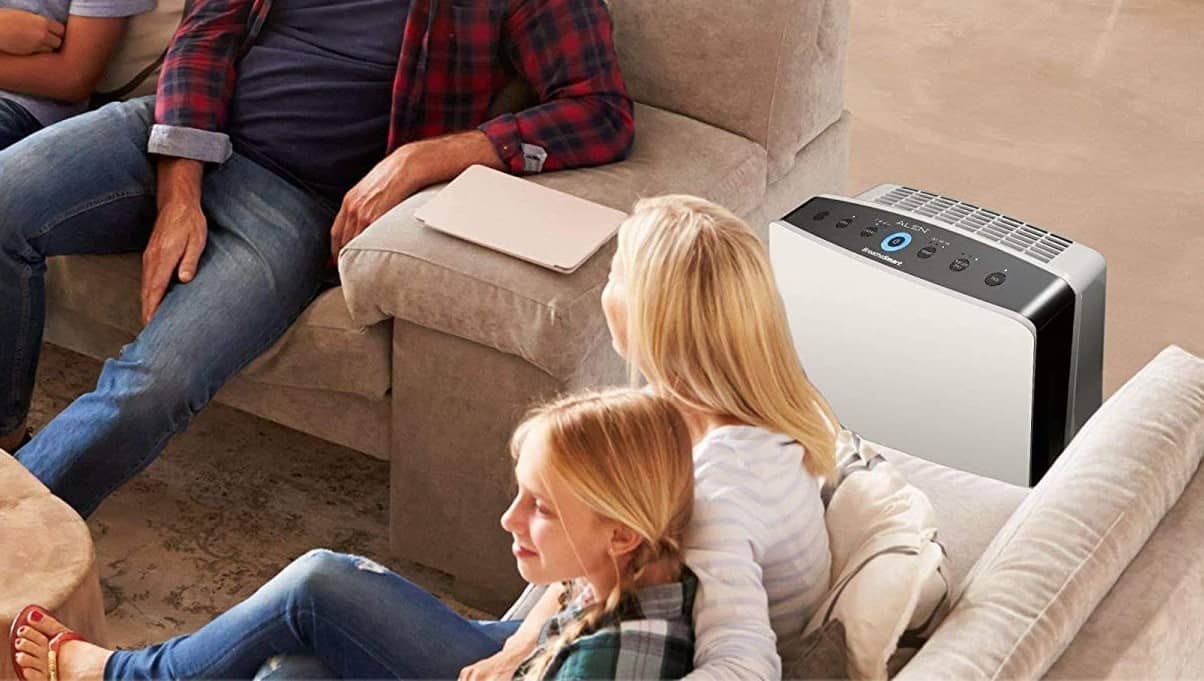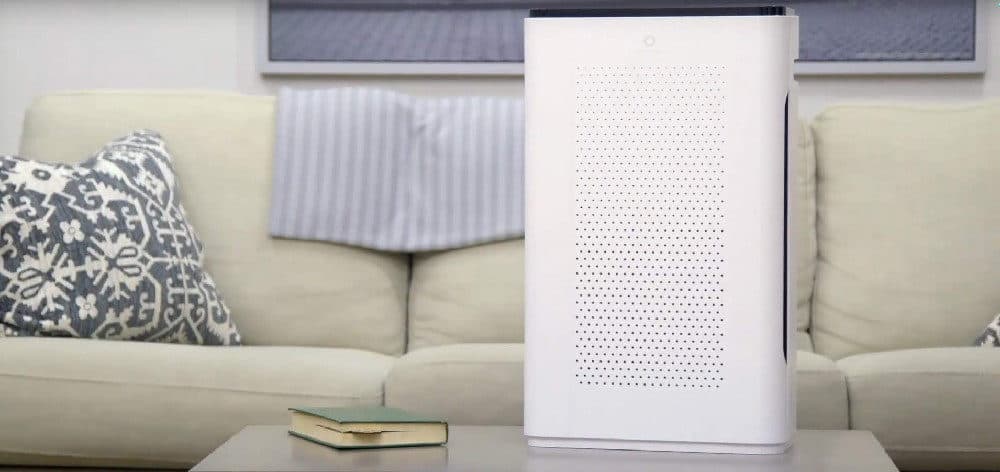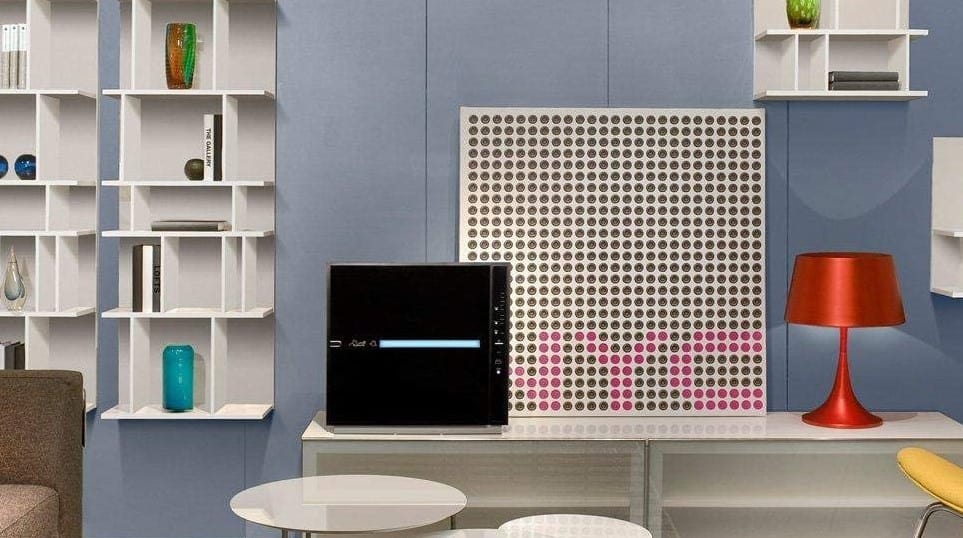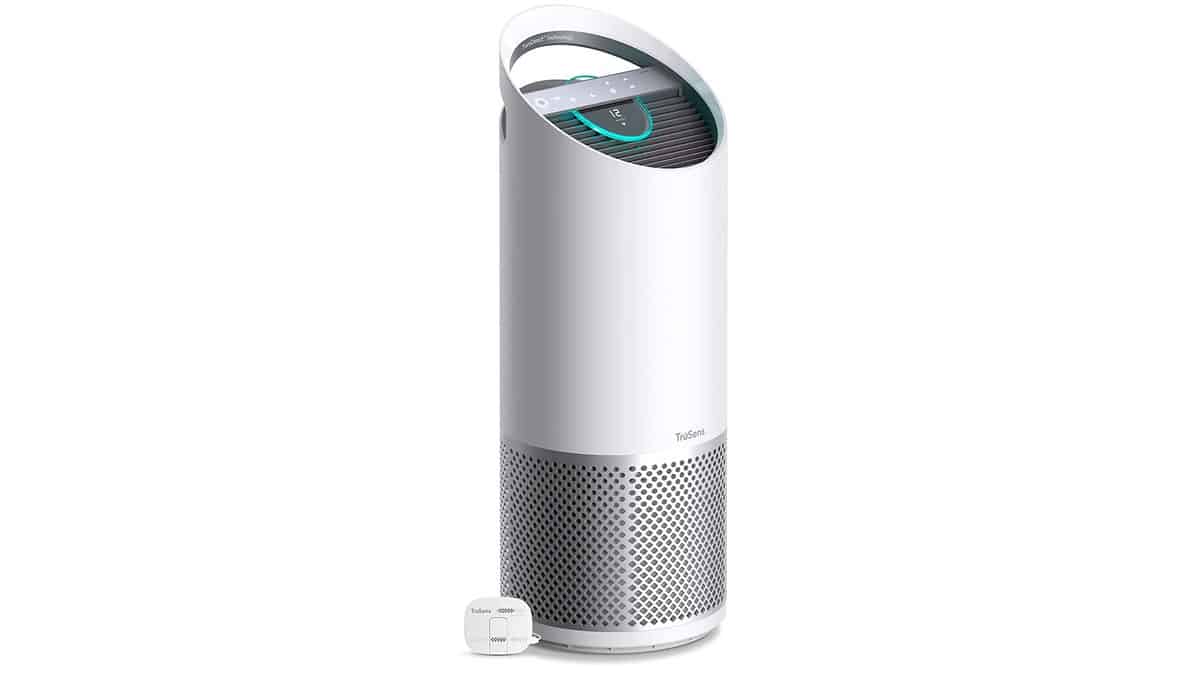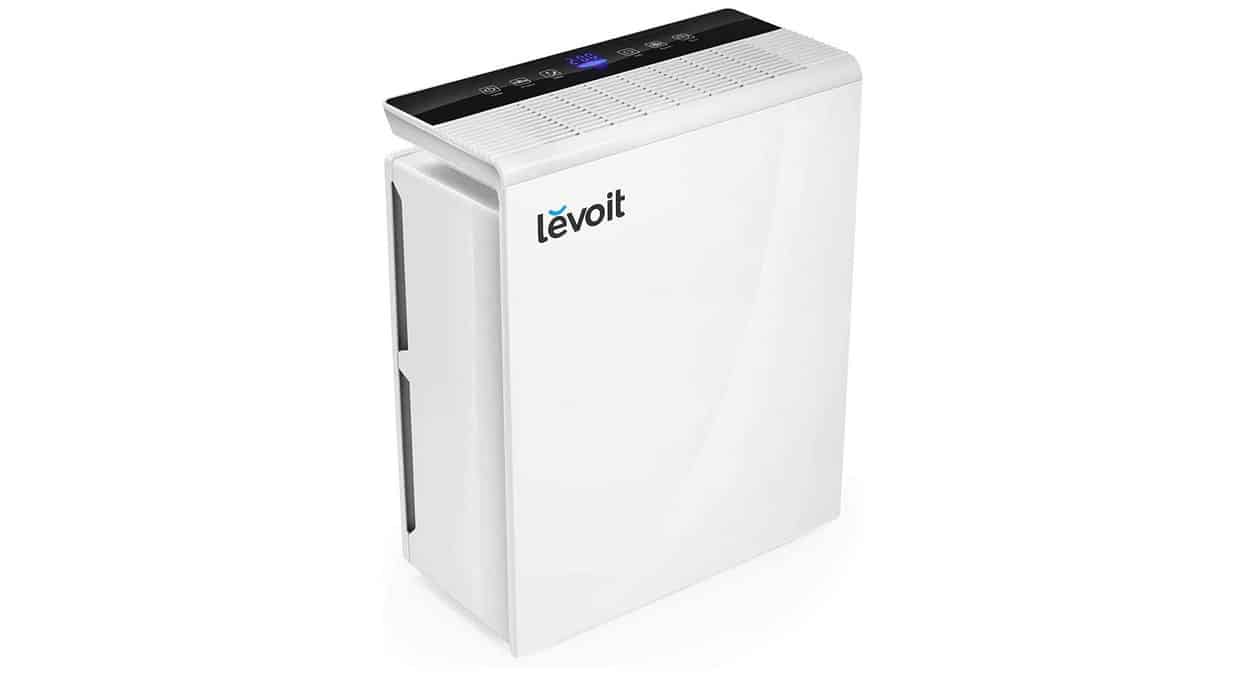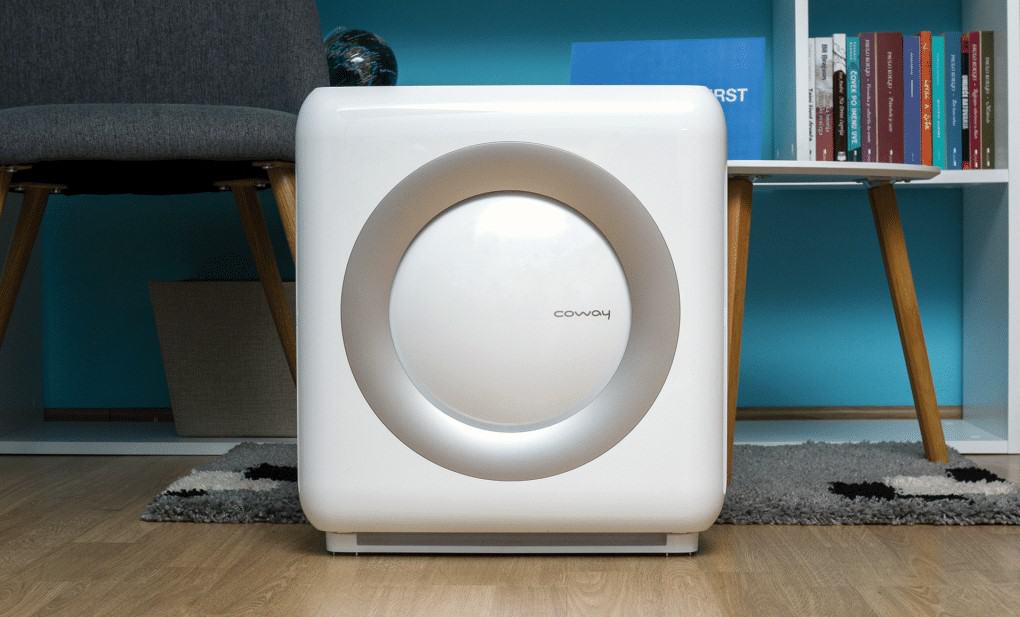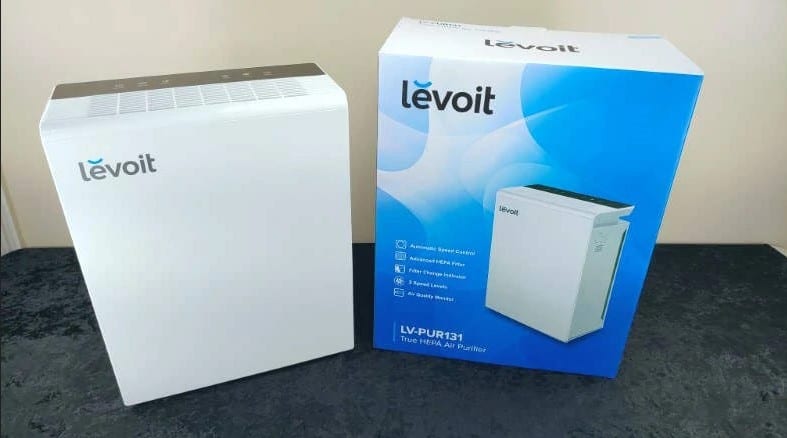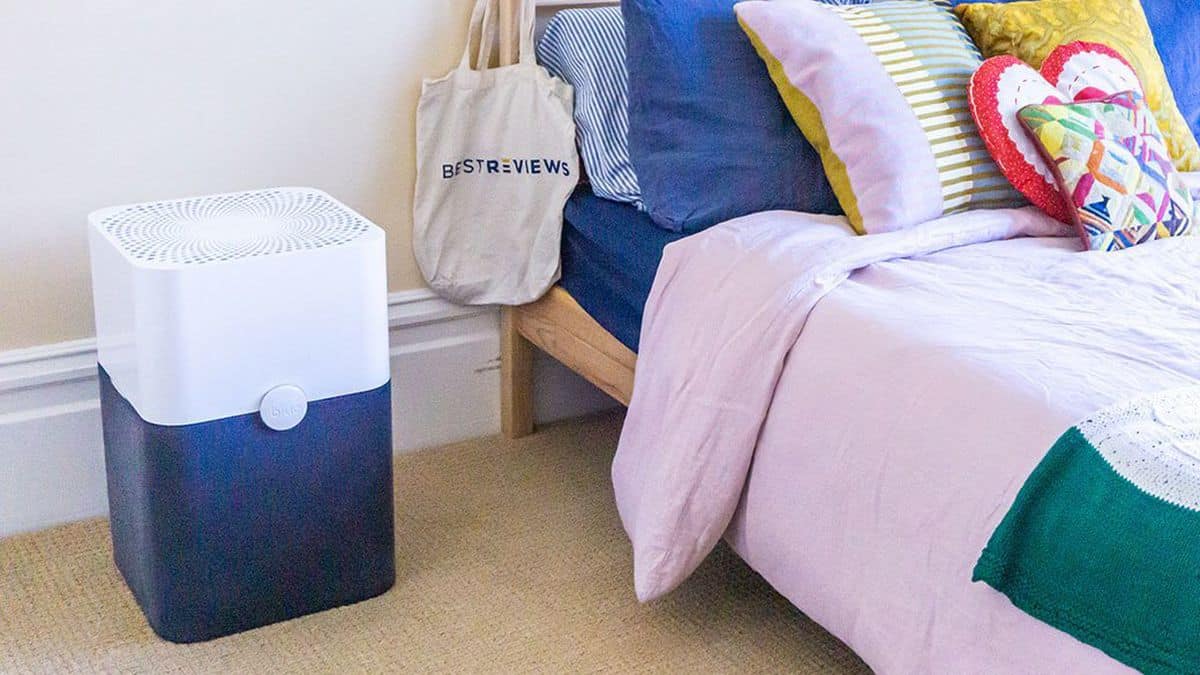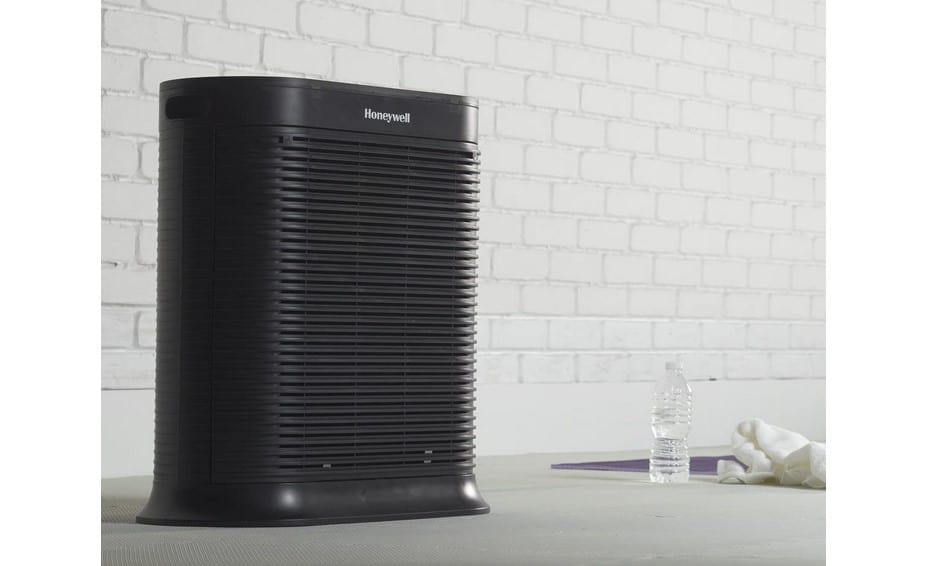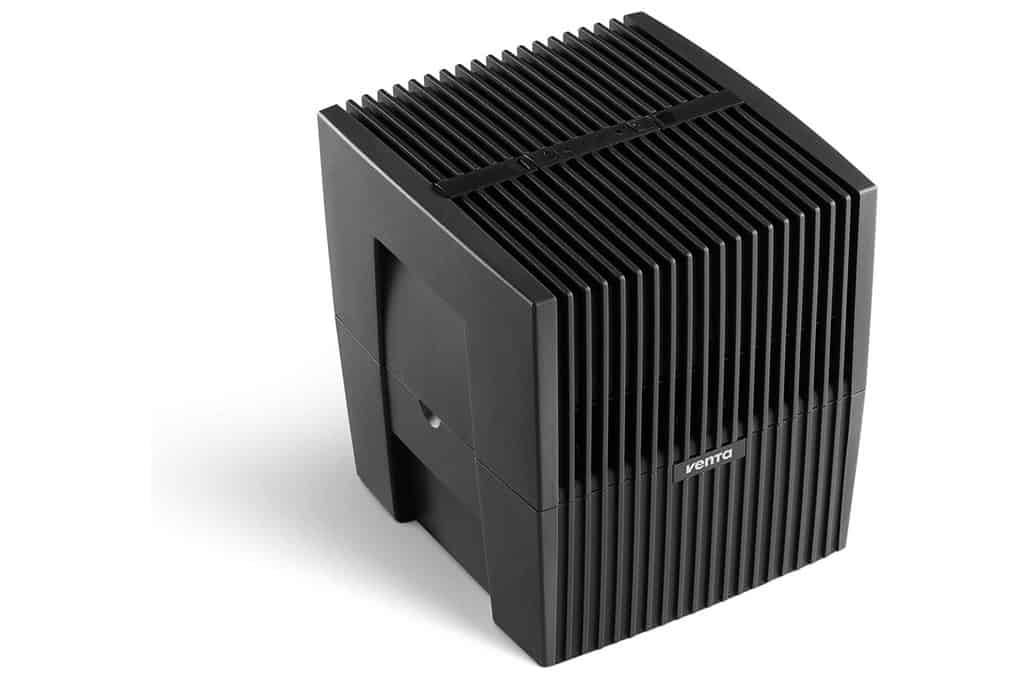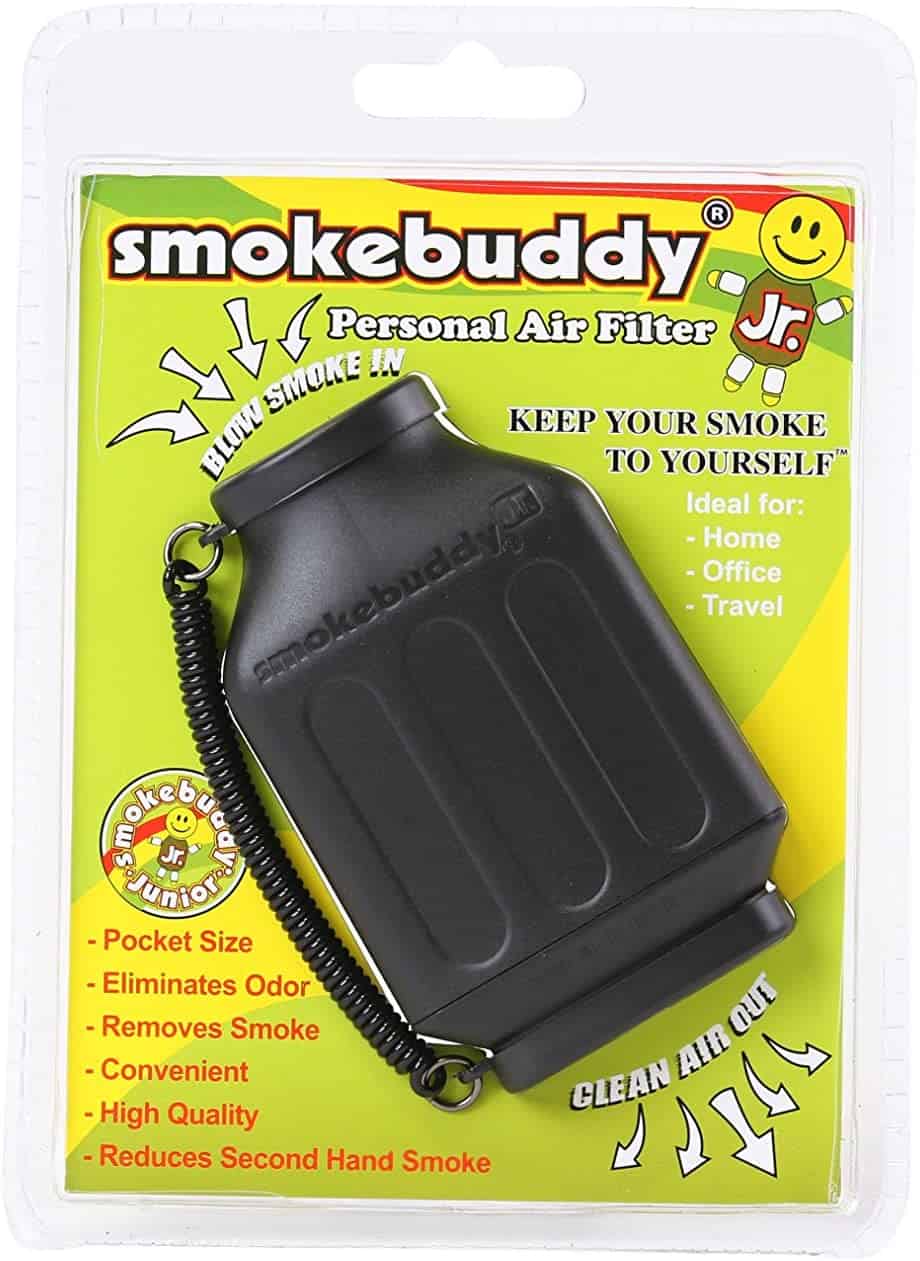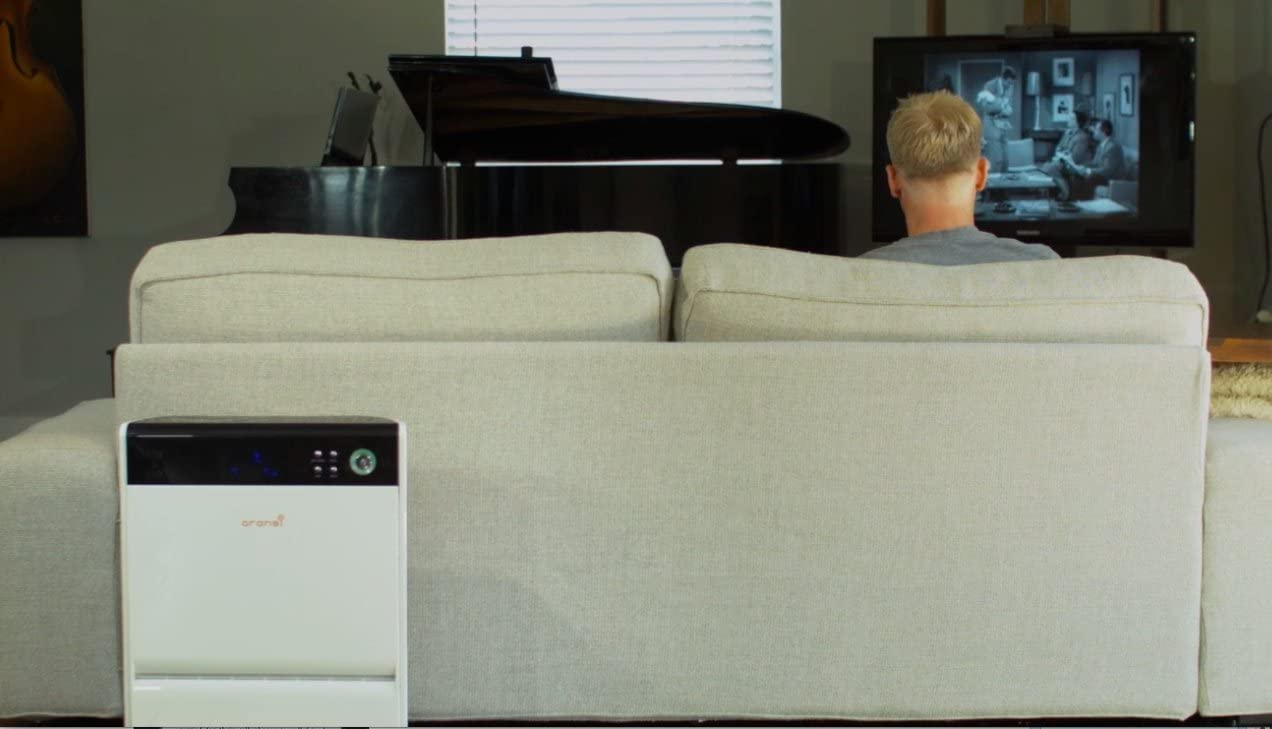While all air purifiers remove pollutants from the air, a germicidal air purifier is designed to also disinfect the air by killing pathogens like germs, bacteria, and viruses from the air. So what do you need to look for if you want a top-of-the-line air purifier that can pull double duty and kill germs? First, you’ll want to confirm that you’re looking for models with ultraviolet or UV lighting or some type of antimicrobial property. Usually installed with UV-C lighting, this wavelength is scientifically proven to sterilize surfaces.
But you’ll still need to ensure that your air purifier features the right CADR figure that’s compatible with the room where you want to put it. Picking an air purifier that’s too small for a room means that it won’t be able to efficiently clean the air — no matter how high the setting.
Top Germicidal Air Purifiers
#1 Envion Therapure TPP240 Air Purifier
We’re sorry, this product is temporarily out of stock
Award: TOP PICK
WHY WE LIKE IT: This air purifier can handle anything from a medium to a large-sized room. Photocatalyst filter technology is included, so you can rest assured that your air is clean. This feature makes it a fine photocatalytic oxidation air purifier. It also has multiple CADR ratings.
- Handles large rooms
- Photo catalyst filter
- Multiple CADR ratings
- Might be too large
A HEPA filter powers the air cleansing capabilities of this air purifier. This means that it effectively removes things like bacteria, viruses, germs, mold, smoke, pet dander, odor, and more from the air. It even has a digital display to make controlling the settings easier than competitors. However, if you don’t have that large room to purify, this might not be the right choice for you. The unit is on the larger side and might be too big for some consumers.
It can handle up to 343 square feet so this model can cleanse almost any moderately sized room. It’ll clean it three times in an hour for a room that size. There is a 3-speed fan so that you can have precision control over the level of cleaning. This model uses patented Germicidal technology unique to this brand so that the air is that much cleaner. It also has an easy-to-clean filter with cleaning indicator light.
#2 Crane EE-5068 Air Purifier
Award: HONORABLE MENTION
WHY WE LIKE IT: You’ll have ultimate control over this unit since it packs in multiple different speed settings. It’ll also turn itself off at bedtime, so you don’t have to worry about anything. It also has reusable filters, so you don’t have to replace them.
- Multiple speed settings
- Turns off at bed time
- Has resuable filters
- Might be a little loud
The multiple functions make this air purifier an excellent bargain for any budget. There are three-speed settings, alongside an option for low noise settings. This low noise setting is perfect to put on when you need a good night’s sleep with cleaner air. You can set the timer for 2, 4, or eight hours. Some consumers report that the third setting is a little too loud for them. This might be a dealbreaker if a totally quiet home is something you need.
The High-Efficiency Particulate Arresting filter is a league above the ordinary options in competing models. It is certified to help with asthma and allergies. For an even better clean, the brand includes UV light so that you can be sure as much particulate matter is taken out of the air as possible. It can work in rooms of up to 300 square feet, so most areas are quickly taken care of by this air purifying unit.
#3 D200 Dual lamp Air Purifier
Award: BEST FOR FULL HOME CLEAN
WHY WE LIKE IT: This option will work to clean the air supply throughout your entire home. It can tackle both small and large rooms with ease using the cleansing properties of ultraviolet light. This is an ozone-free option.
- Works on entire home
- Has ultraviolet light
- Ozone-free option
- Doesn’t use a HEPA filter
This option is unique to most run-of-the-mill air purifiers because it installs directly into your house. Instead of setting it up with an outlet or rechargeable battery, you’ll install it into your duct so that it can take care of all the airflow in your home. This makes it perfect for a full-house clean you can’t find elsewhere. However, keep in mind that this air purifier uses ultraviolet as its purifying agent. Those with allergies or asthma would be better off choosing a method with a HEPA filter.
This PCO UV air purifier uses a dual-lamp system to bring fresh airflow throughout your home. The cleansing properties of ultraviolet light are used to tackle allergens and particles that exacerbate asthmatic lungs. It installs easily, so you can have fresh air within minutes. This model also uses Philips brand bulbs, which are made in Europe.
#4 PURE AIR UV Air Purifier
Award: BEST FOR ULTRAVIOLET TREATMENT
WHY WE LIKE IT: You’ll know when this air purifier is on and working because an LED lights up to confirm it’s in operation. It uses ultraviolet light that is powerful enough to clean an entire home. This model also comes with an electronic ballast installed.
- LED light to signal it’s “on”
- Uses an electronic ballast
- Cleans an entire home
- No physicla filtration
You’ll never have to guess if this air purifier is working or not. It includes an LED indicator that confirms it’s in working order. This model installs directly into the air duct to ensure that your entire home is supplied with fresh breathing air. This makes it perfect to use as the sole air purification method in your house. Unfortunately, it won’t be an excellent fit for allergies or asthma. This unit doesn’t use a filter, which is suggested for those conditions.
Ultraviolet light is known for being fantastic for cleansing air of all sorts of particulate matter. This model can obliterate up to 99.9% of mildew, airborne viruses, and mold. This is the same feature you’ll find in our review of the AeraMax Baby DB5. Beyond ensuring sterilization, it also works as a deodorizer. Even when you’re cooking with fragrant spices in the kitchen, this air purifier will be able to cleanse the air of those odors.
#5 Love This Kitchen Plug-In Air Purifier
Award: BEST FOR EASY INSTALLATION
WHY WE LIKE IT: A sleek and stylish option, this air purification device is powered off electrical outlets. This means you can pop it into the wall wherever you travel. It’s a highly compact option that’ll fit easily in luggage.
- Uses electrical outlets
- Can travel with you
- Extremely compact option
- Might be too small
This air purification unit is tiny but mighty and ready to be your favorite travel companion. It’s made with busy professionals and those who travel a lot in mind. You can take it to the office, use it in your car with an adapter, bring it to hotels, and more. Since this unit is made for portability, it is not recommended as your primary air purification method. This won’t be able to clean your entire house by a long shot.
It uses the cleansing properties of UV light to help purify the air you breathe, which makes it a contender as one of the best UV air purifiers to get. This air purifier keeps those lights hidden entirely behind an enclosed processing chamber. This prevents the leakage of ultraviolet light. There is an inner coating of titanium dioxide to ensure that microorganisms are also taken care of. This includes mold, mildew, and similar particulates.
#6 Honeywell HPA100 Air Purifier
Award: BEST FOR REMOVING ALLERGENS
WHY WE LIKE IT: Because it’s a part of the Allergen Plus series, you know that this air purifier will be tough on things like dust, pollen, and pet dander. It is also ENERGY STAR certified, so it’s been through rigorous efficiency testing.
- A part of the Allergen Plus series
- Certified by ENERGY STAR
- Uses HEPA filtration
- Might have a strange smell
If you have allergies, this model is an excellent choice. It’s part of the ALLERGEN PLUS series that this brand makes. That means it’s fantastic for those struggling to reduce airborne allergens, like mold, mildew, pet dander, and more. When they received the unit, some consumers reported that it had a faint “scent.” However, this is most likely due to the factory, and the scent fades over time.
It uses a HEPA filter to help its four different air cleaning levels power through as much particulate as possible. This helps capture dirt, pollen, smoke, and more. It can move the air in a 155-square-foot room around 4.8 times an hour. This means it’s excellent for small to medium-sized rooms that need a healthy boost, such as a bathroom or kitchen. This unit attained an ENERGY STAR certification, which means it went through rigorous testing for efficiency.
What is a Germicidal Air Purifier?
A germicidal air purifier is simply an air purifier with an additional feature designed to effectively remove germs from the air. Typically, your options are either UV light or an antimicrobial layer on the existing filter.
As compared to regular air purifiers, germicidal air purifiers pull double duty by not only removing common pollutants from the air like smoke, dust, and dander, but can also help to remove bacteria, viruses, parasites, and even fungi — all collectively referred to as germs — from the air. Keep in mind though, that UV and antimicrobial air purifiers work slightly differently.
Germicidal Air Purifiers vs. Air Purifiers
The biggest difference between standard air purifiers and germicidal air purifiers is the absence or presence of an additional antimicrobial feature. Traditional air purifiers are only designed to remove particles up to a certain size from the air. This usually includes smoke, dust, dander, and mites — as long as they’re present in the air. Remember that air purifiers can’t remove particles from surfaces.
A germicidal air purifier can also remove particles from the air but goes a step further by removing germs as well. Depending on the type of germicidal air purifier you pick, it will feature either a passive or active germicidal function.
Passive germicidal functions can include an antimicrobial coating on a HEPA filter which helps not only remove pollutants but to neutralize pathogens before releasing the cleaned air back into the room. In contrast, an active germicidal function usually relies on UV light. Often this feature must be triggered either through pre-programmed settings or manually through your air purifier’s control panel or remote. If you’re primarily concerned about eliminating smells from your home, the best air purifiers for odor may be a better, more economical option.
How Germicidal Air Purifiers Work
There are a few main types of germicidal air purifiers — antimicrobial (including silver-infused), air sterilizers, and ultraviolet germicidal irradiation (UVGI) light-based. Antimicrobial properties are often add-on features for mechanical and active carbon filter-based air purifiers. This simply means that the filter has an antimicrobial coating so that in addition to trapping larger particles, germs are also captured.
But the filtration system still works the same way by moving air over the filter and capturing particles. A common coating option is silver because it’s not only naturally antimicrobial but is effective against viruses and fungi.
Air sterilizers take an active approach to cleaning the air by using heat. These purifiers pull air into a sterilization chamber where temperatures can reach as high as 400 degrees Fahrenheit. Not only does this kill pathogens, but it also targets allergens. The clean air is then cooled before being released back into the room.
In contrast, a UVGI air purifier works slightly differently. These purifiers usually feature UV-A, UV-B, and UV-C wavelengths. While UV light is proven to kill germs, there’s a caveat. To effectively neutralize germs, the light must be powerful, and the exposure must be long enough to give the light time to work. In some cases though, there are bacteria and mold spores that are resistant to UV radiation.
Another issue specific to UVGI air purifiers is that many consumer-focused purifiers don’t feature UV light settings that last long enough to effectively kill germs. In many cases, the lights may only power on for a few seconds, which is insufficient when experts agree that UV lights should be on for at least a few minutes and even several hours to thoroughly sterilize the air.
And finally, UV light alone will not remove particles from the air. So, if you also want to remove smoke, dust, or other larger particles from the air, you’ll need to pair that UV light with some other type of filtration method such as a HEPA filter.
However, a common concern with UVGI purifiers is that they have a higher risk of producing ozone as a byproduct. Because ozone is a known respiratory irritant, it can be especially problematic for people with breathing conditions such as asthma, emphysema, and bronchitis. To avoid this risk, look for UV air purifiers that are compliant with the California Air Resources Board guidelines — or CARB-approved.
If noise pollution is an additional concern, the best quiet air purifiers might be appealing to you as well.
Why You Should Buy a Germicidal Air Purifiers
While germicidal air purifiers might seem like a costly upgrade, that’s often not the case. And there are plenty of scenarios that make incorporating this appliance into your home a good idea. From better air quality to reduced illness, picking a germicidal air purifier is a smart choice.
Are Germicidal Air Purifiers Worth Buying?
You’re Immunocompromised: While most healthy people have a strong immune system that can fight off the common cold or a few sniffles, people who are immunocompromised might not be so lucky. A good germicidal air purifier can help to reduce the risk of catching a bug that could make you very sick.
You Want to Minimize Germs Spreading in Your Home: We’ve all gotten sick after someone came home with a cough or a case of the “sniffles”. If you want to minimize the chance of a virus or bug spreading throughout your household and making everyone sick, a germicidal air purifier is a good investment.
You’re Concerned About Air Quality: Of course, the most logical reason to get a germicidal air purifier is that you want better indoor air quality. Since many air purifiers come with add-on air sterilization features, this can be a good reason to buy this appliance.
Why Germicidal Air Purifiers May Not Be for You
You’re Nervous About Ozone: Especially if you’ve been eyeing a UV-light air purifier, there’s the potential for ozone exposure. If you’re in the vulnerable group of people with respiratory conditions, you might want to steer clear of germicidal air purifiers — especially the UV models.
You Won’t Remember to Run it Continuously: Air purifiers are intended for 24/7, 365 days a year of use. If you only use your air purifier intermittently, then how good will the indoor air quality be?
You’re Not Prepared for the Financial Upkeep: Air purifiers with filters usually need to have them replaced periodically. And over time, that cost can add up. If you’re not financially prepared (or willing) to regularly replace the filters, this appliance might not be for you.
How Long Will Germicidal Air Purifiers Last?
Much like with traditional air purifiers, the question isn’t about how long your germicidal air purifier will last but how frequently you’ll need to replace the components. Depending on your model, you’ll need to either replace a filter or replace a filter and the UV bulbs if you have a UV air purifier. Although, if you opt for a great filterless air purifier, you won’t have to replace anything at all.
For the filter, expect to replace it every three to six months depending on the type of filter you’re using. Activated carbon filters need to be replaced every three to six months while HEPA filters must be replaced every six to 12 months.
With UV lights, the bulbs are usually rated for 9,000 hours of use. Assuming that you’re using your purifier continuously, this translates to replacing the bulbs roughly every 12 months.
How to Choose the Best Germicidal Air Purifier
Germicidal air purifiers can be an alluring prospect — especially if you struggle with frequently falling ill. Along with removing larger particles from the air, they can reduce the chance of people catching germs through the air. But because the technology is often not as intense as with commercial-grade air purifiers, you’ll want to keep a few factors in mind as you shop for a germicidal air purifier.
Germicidal Air Purifiers Key Factors to Consider
1. What technology will the air purifier use to remove germs?
This is a serious question that you need to prioritize. There are several ways to remove germs from the air, all with varying levels of success and drawbacks. For the least error, an antimicrobial-coated filter can be the easiest solution. Look for options that feature silver particles as silver is naturally antibacterial, anti-viral, and antifungal.
2. If it’s a UV purifier, how strong is the light, and how long does the light stay on?
UV light can disinfect surfaces and neutralize germs. But to do so, the light must be strong enough and stay on for several minutes. Avoid air purifiers that only trigger the light for a few seconds as nothing will get sterilized in that time frame. Likewise, UV-C is often the preferred option with a wavelength of 254 nanometers (nm).
3. How large is the room where you want to place the air purifier?
Just like with standard air purifiers, you need to match the appliance’s CADR rating to the size of your room. Picking an appliance that’s rated for a smaller room, but then using it in a big room, means that it won’t run efficiently.
4. Do you prefer mechanical or passive filtration?
If your main concern is about removing as many particles as possible, mechanical filtration is often considered the superior choice. Ideally, a HEPA filter-based mechanical filtration should be prioritized as this type of filter is most effective at removing contaminants from the air.
5. Do you have a budget to replace filters and/or light bulbs?
Filters — and light bulbs if you opt for a UV air filter — represent a periodic fixed cost that you need to allow for in your budget. Carbon filters are the most wallet-friendly at roughly $50 each but must be replaced every three to six months.
Meanwhile, HEPA filters can be as much as $200 apiece and must be replaced every six to 12 months. Also remember if you have a UV air filter, the bulbs will need to be replaced roughly every year and range from $15 to as much as $125 depending on the model.
6. What is the noise output?
Most air purifiers come with multiple settings, allowing you to toggle between stronger settings for initial cleaning and then quieter options for continuous operation. Even if you’re not putting an air purifier in your bedroom, checking the decibel output is a good idea to ensure that the white noise it creates isn’t too distracting for you.
7. What kind of controls does it have?
At a minimum, you want a control panel on your appliance that’s easy to use. But these days, many air purifiers also come with remote controls or have supported apps so you can manage settings from your phone.

![Best Germicidal Air Purifiers in [year] 1 best germicidal air purifier](https://www.gadgetreview.dev/wp-content/uploads/best-germicidal-air-purifier-image.jpg)


![Best Germicidal Air Purifiers in [year] 2 Crane Air Purifier with True HEPA Filter, UV Light, 300...](https://m.media-amazon.com/images/I/31Sp6XuiYBL._SL160_.jpg)
![Best Germicidal Air Purifiers in [year] 3 D200 Dual lamp Air Purifier Whole House Filter Uv Light...](https://m.media-amazon.com/images/I/412hprOLOGL._SL160_.jpg)
![Best Germicidal Air Purifiers in [year] 8 Our #4 Pick is the PURE AIR UV AIR PURIFIER](https://m.media-amazon.com/images/I/41ifw9FTqIL._SL160_.jpg)
![Best Germicidal Air Purifiers in [year] 10 Our #5 Pick is the LOVE THIS KITCHEN PLUG IN AIR PURIFIER](https://m.media-amazon.com/images/I/41tb8lwAH6L._SL160_.jpg)
![Best Germicidal Air Purifiers in [year] 11 Our #6 Pick is the HONEYWELL HPA100 AIR PURIFIER](https://m.media-amazon.com/images/I/41ZmcPbBtBL._SL160_.jpg)


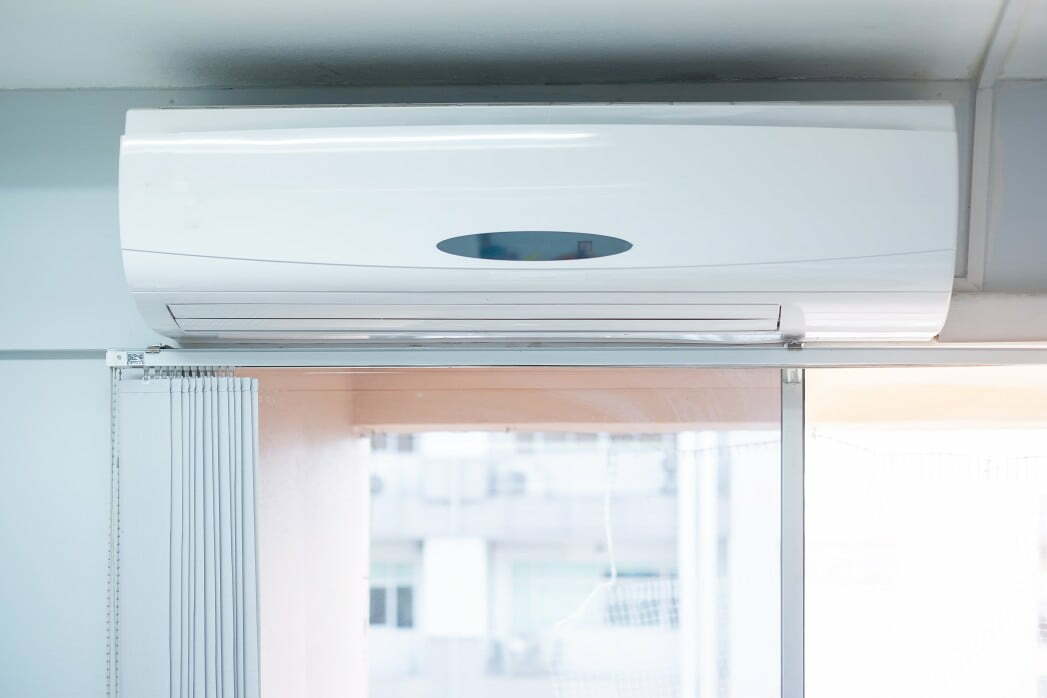
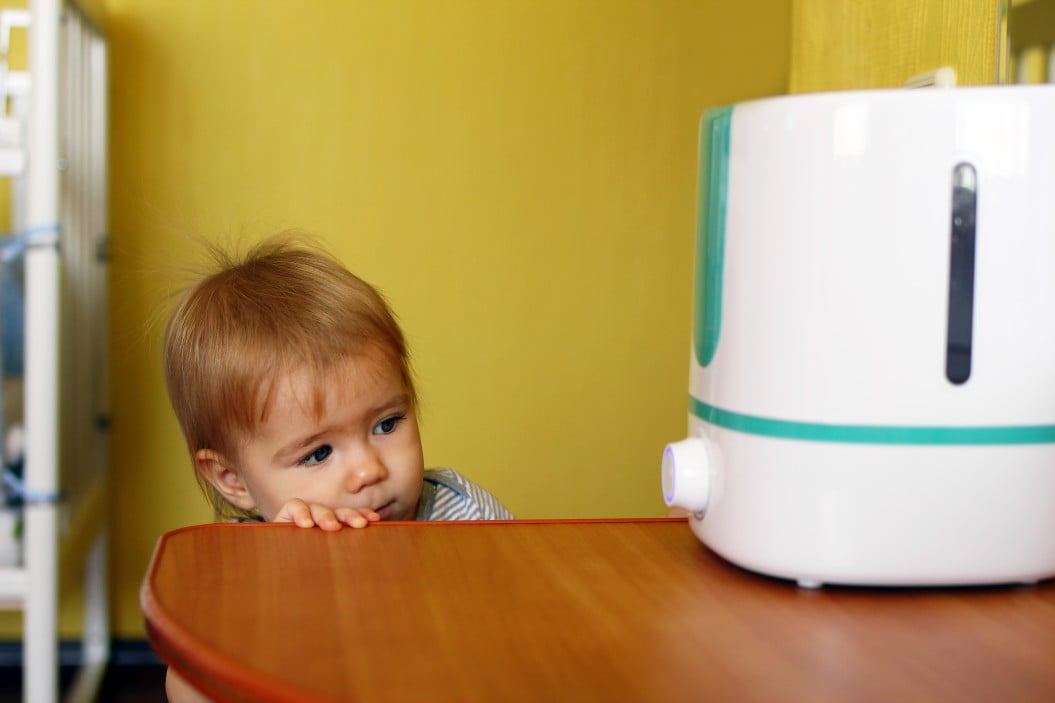
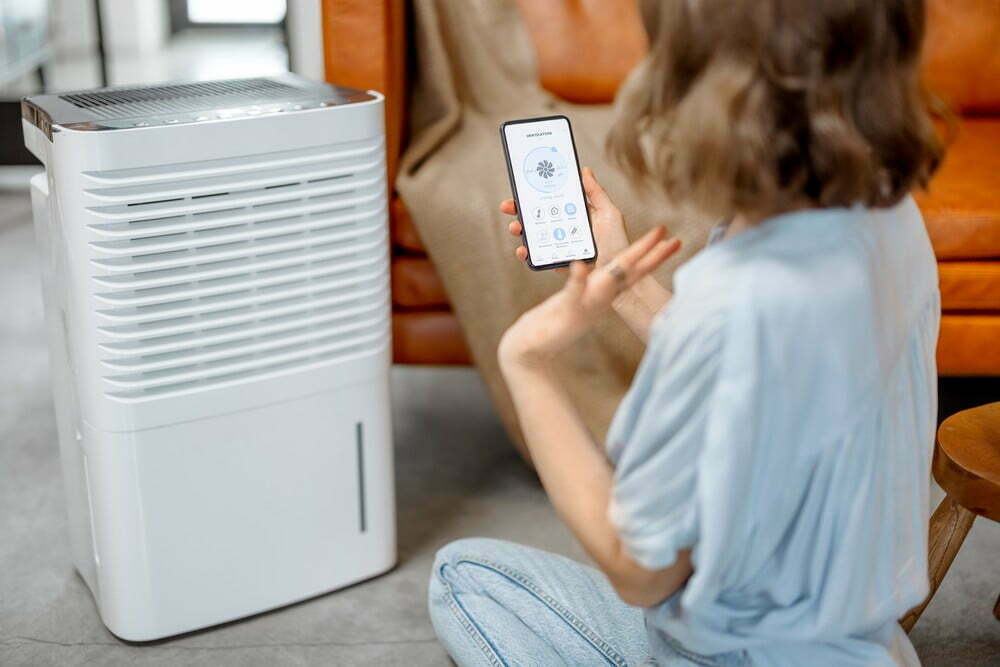
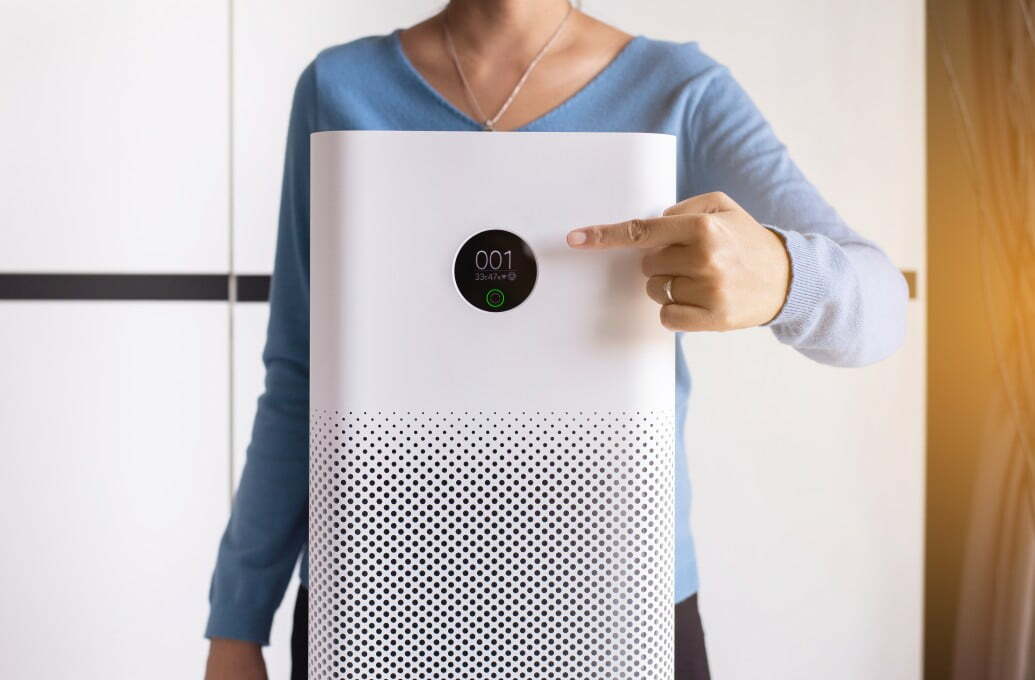
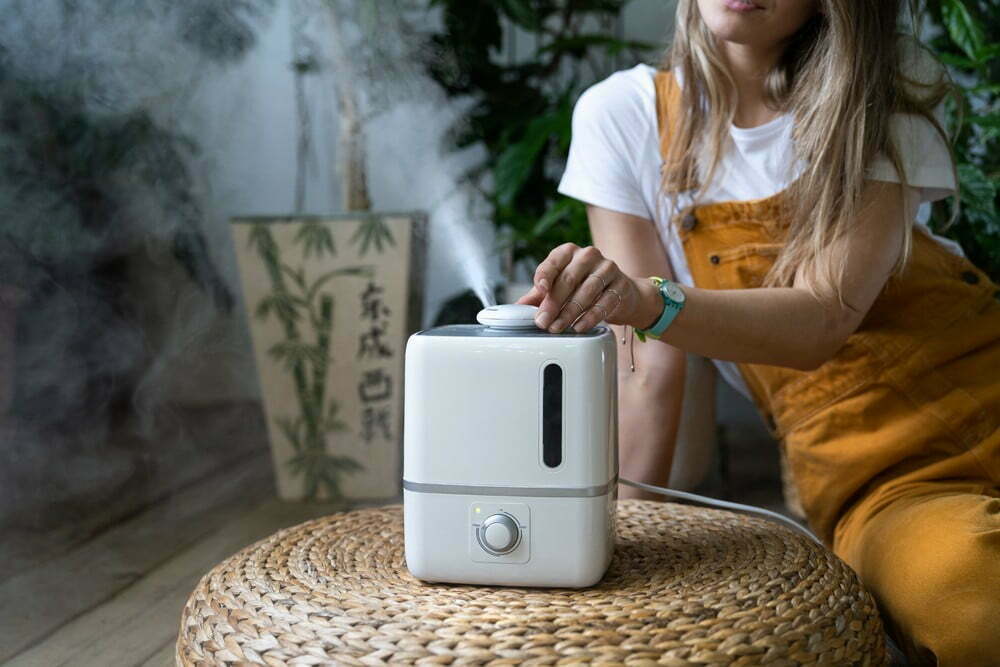
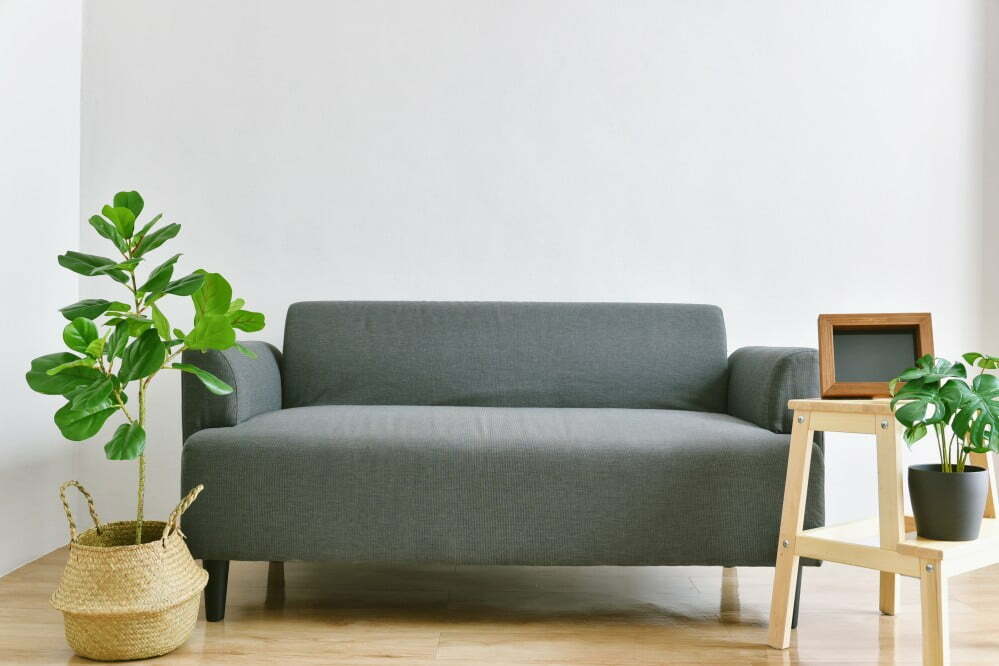

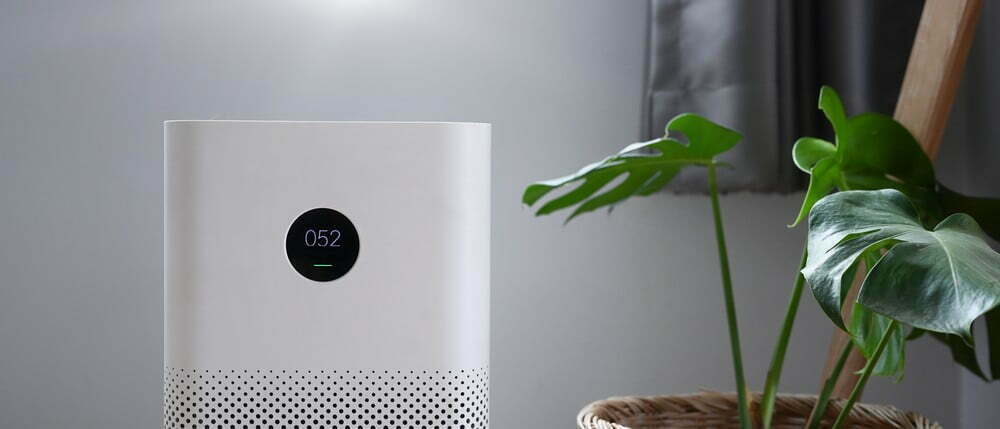
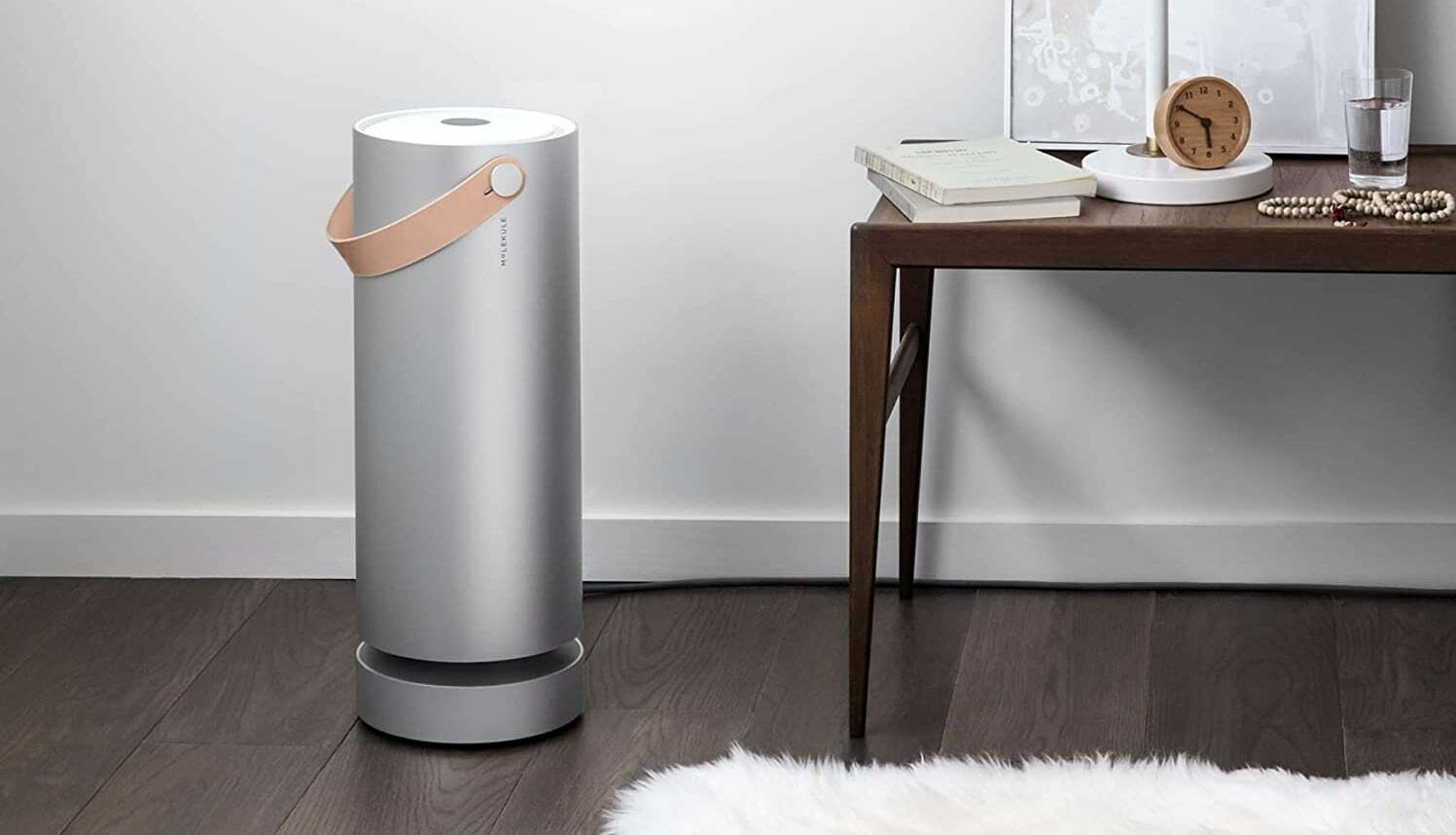
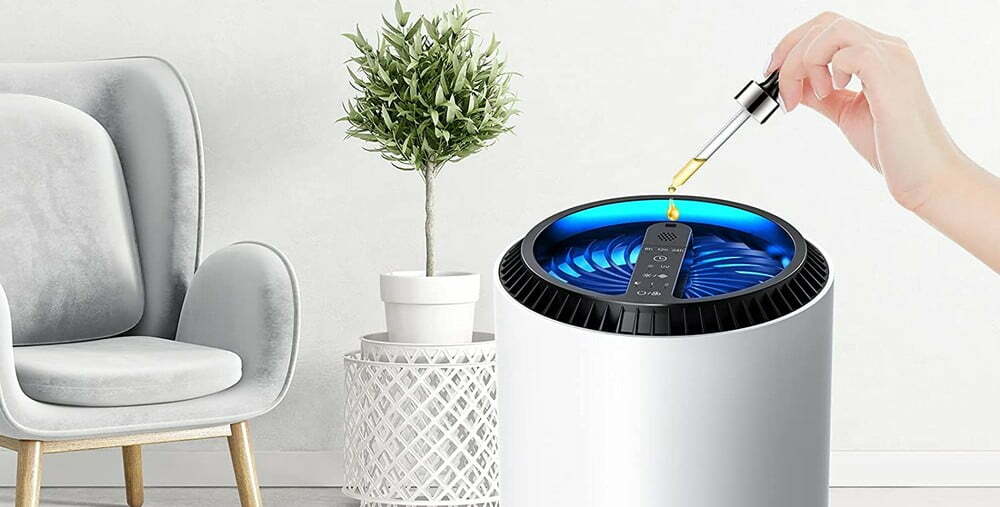
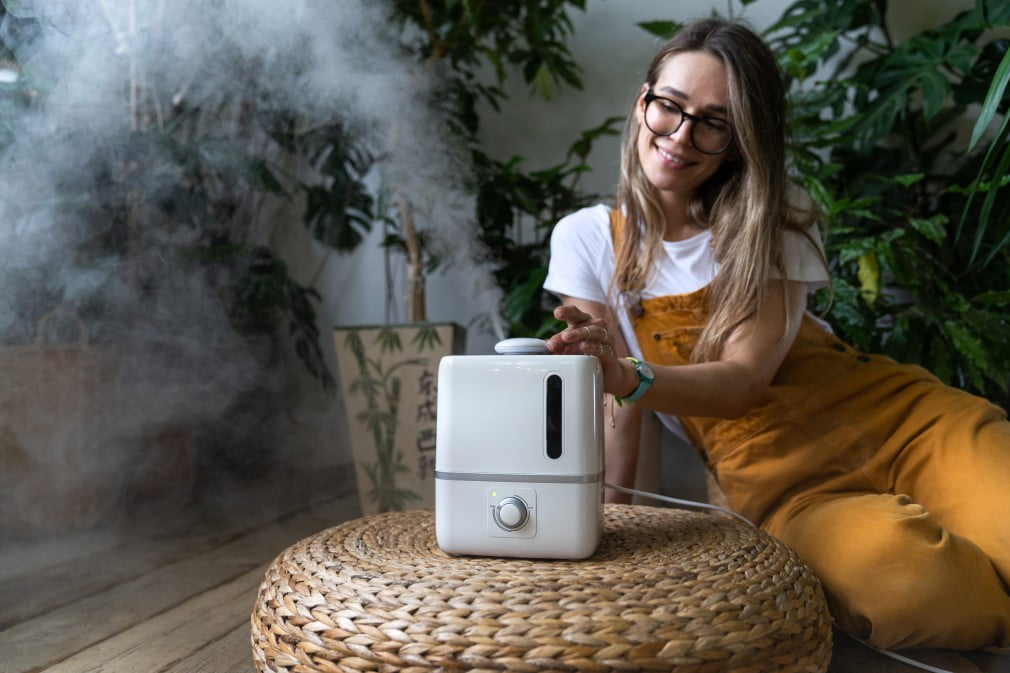
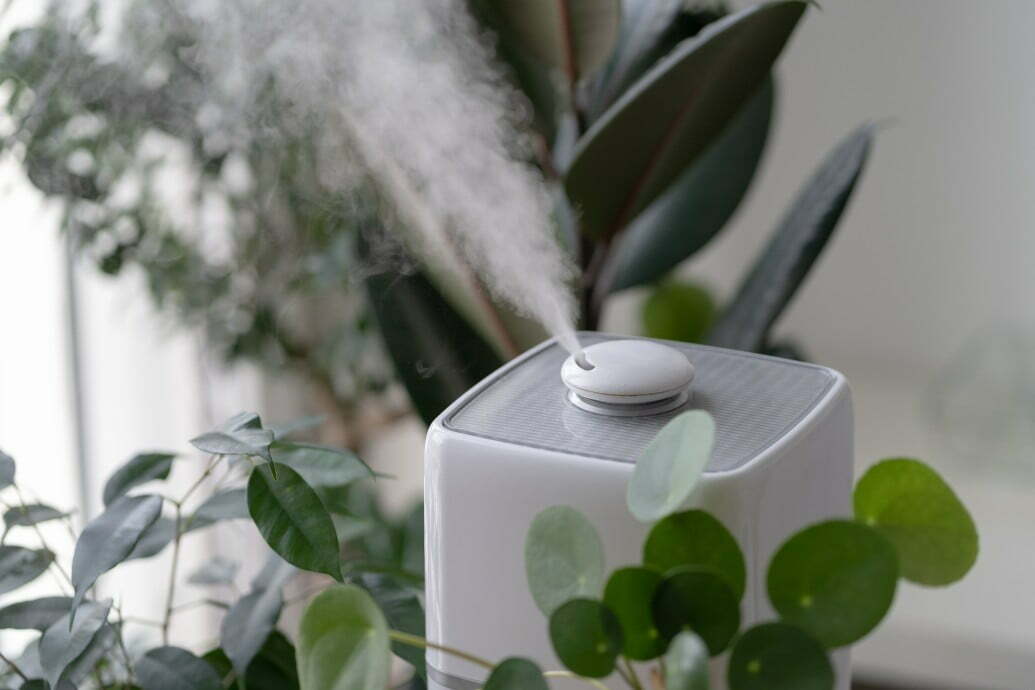
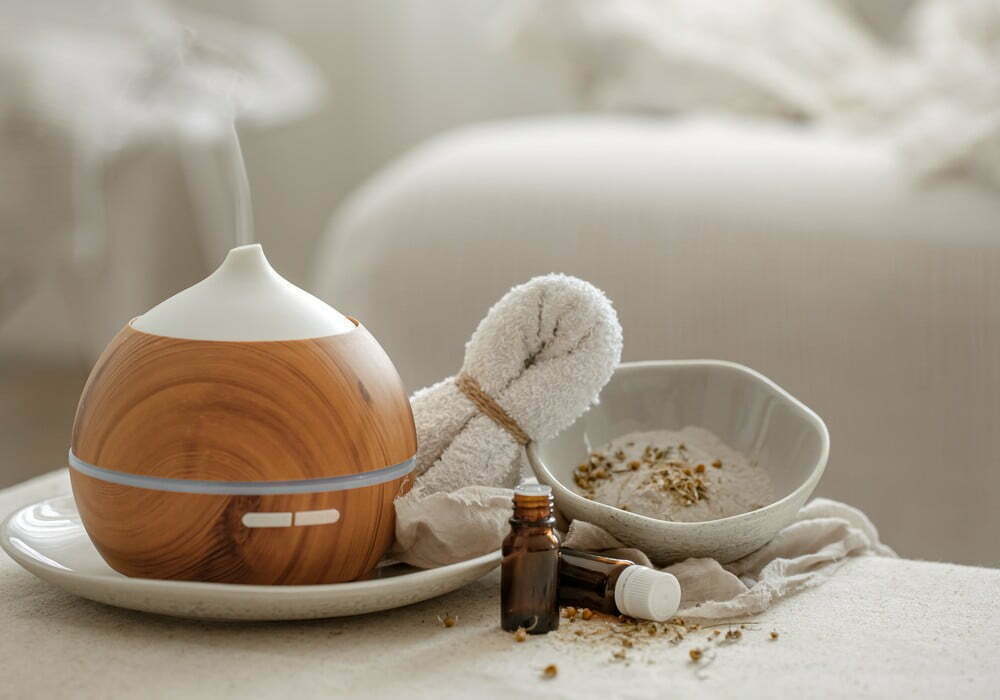
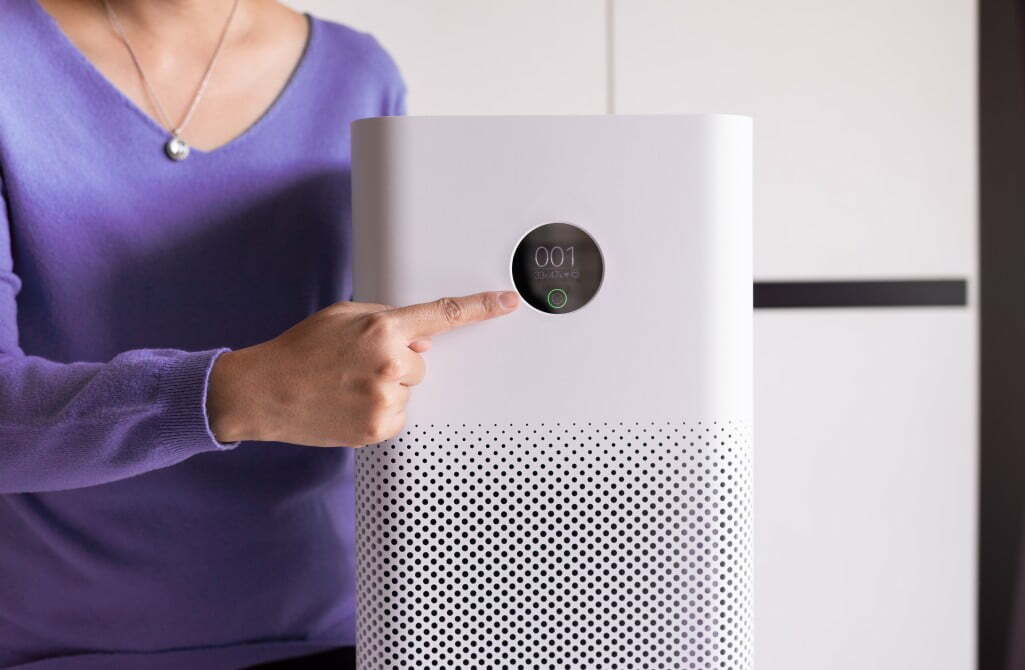
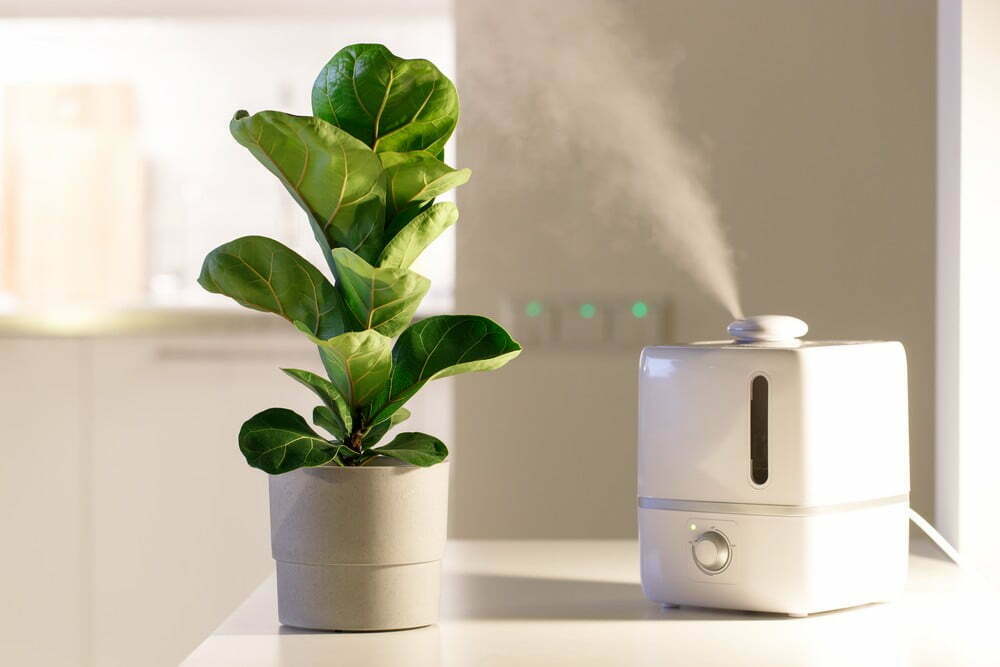
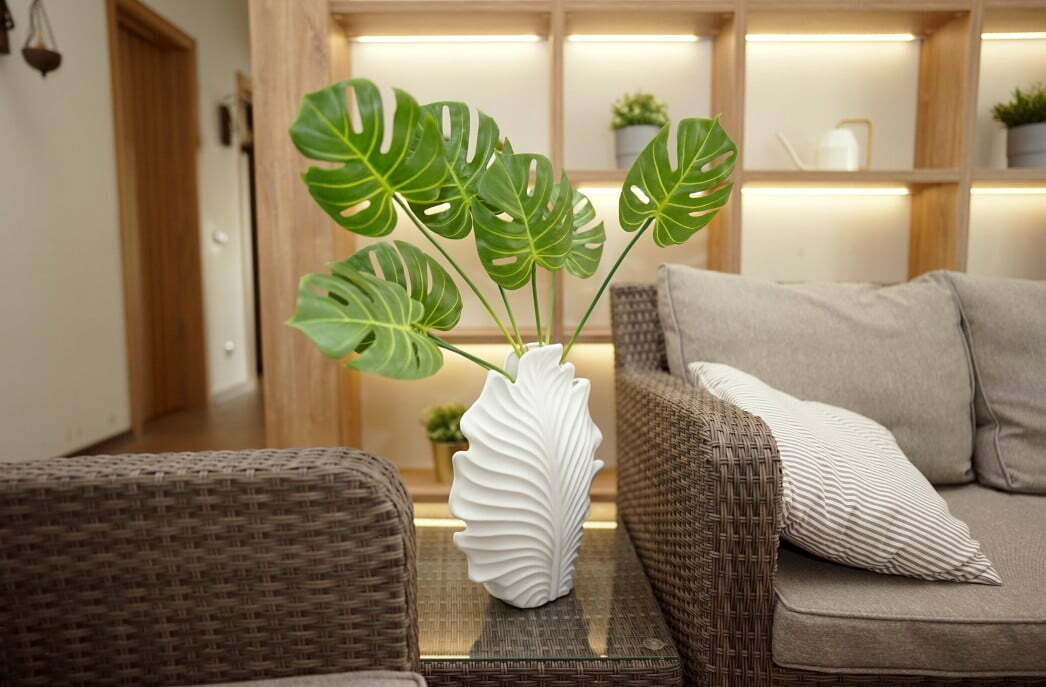
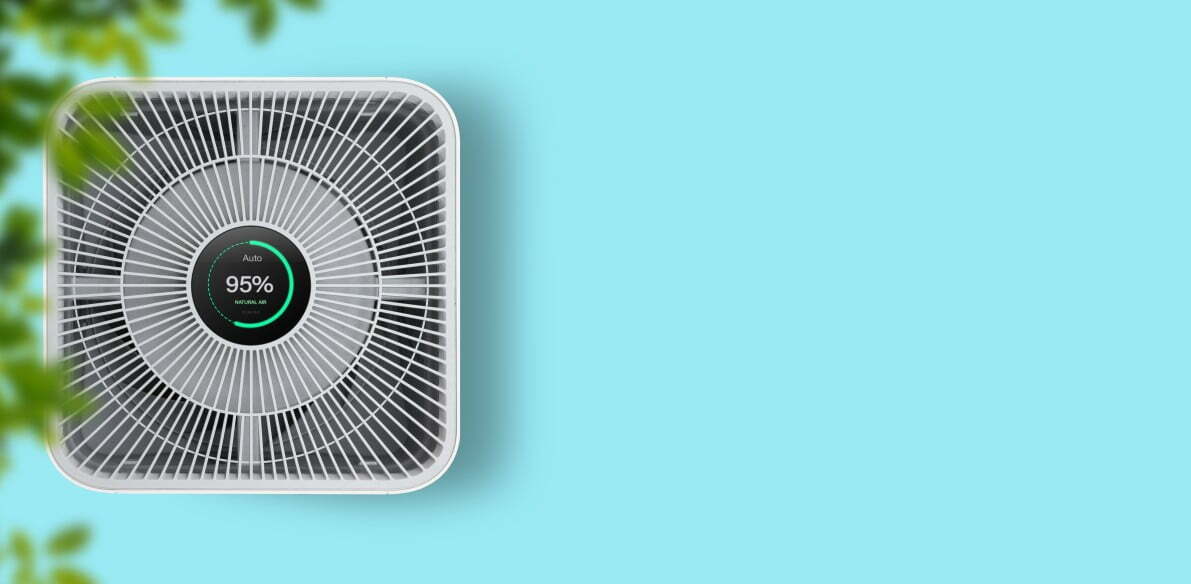
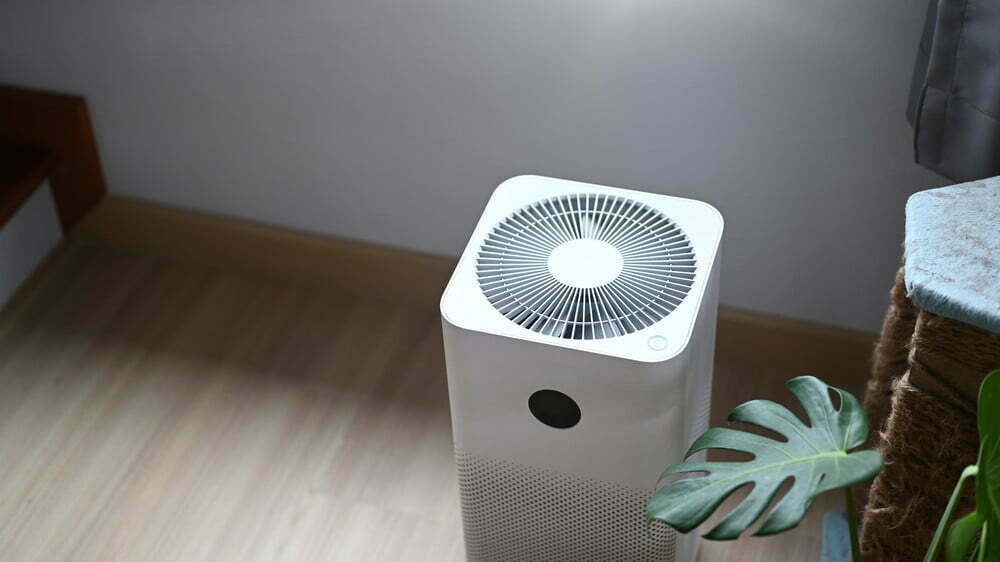
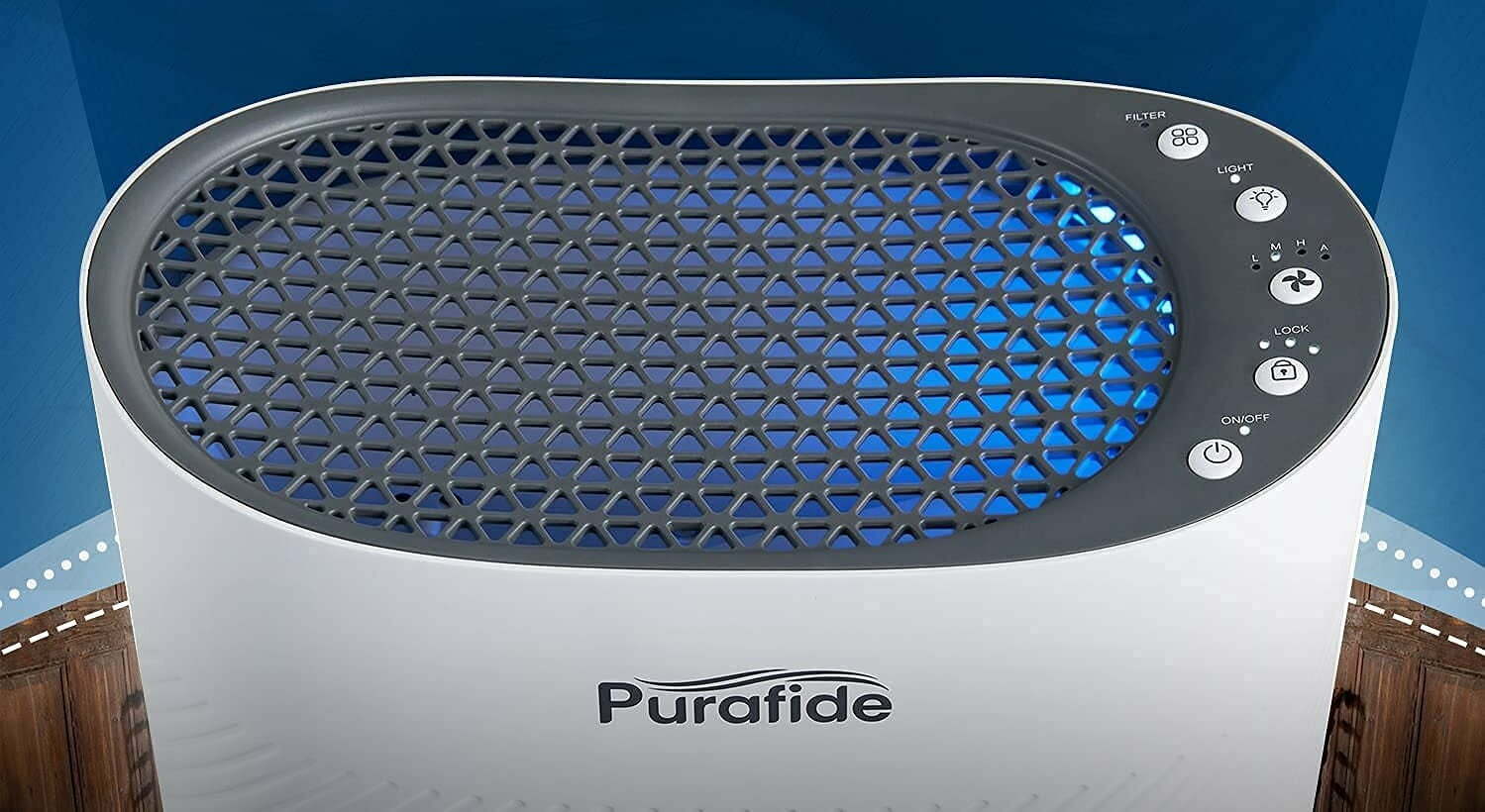
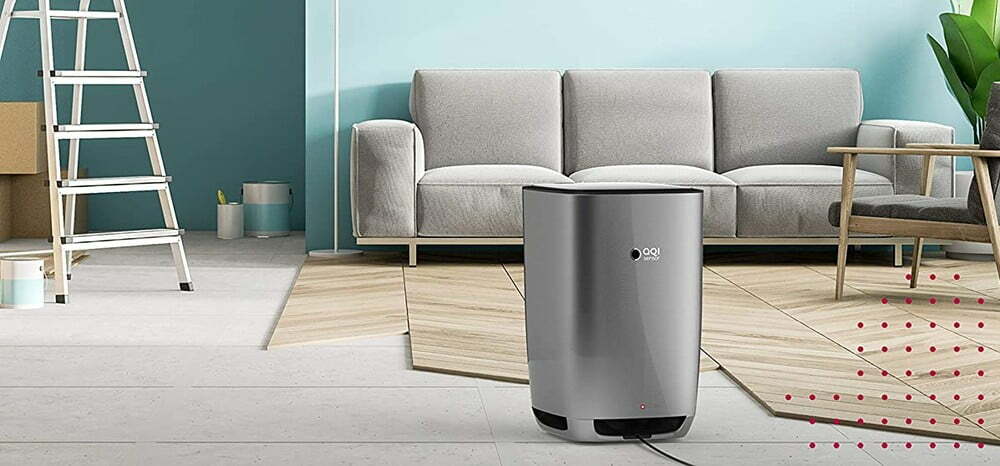
![Best Air Purifiers for VOCs and Formaldehyde in [year] 32 Best Air Purifiers for VOCs and Formaldehyde in 2026](https://www.gadgetreview.dev/wp-content/uploads/best-air-purifier-for-vocs-and-formaldehyde-image.jpg)
![Best Air Purifier in [year] ([month] Reviews) 33 Best Air Purifier in 2026 (January Reviews)](https://www.gadgetreview.dev/wp-content/uploads/Honeywell-True-HEPA-Allergen-Remover-HPA300-e1475603569442.jpg)
![Best Air Purifiers for Dust in [year] 34 Best Air Purifiers for Dust in 2026](https://www.gadgetreview.dev/wp-content/uploads/best-air-purifier-for-dust-image.jpg)
![Best Honeywell Air Purifiers in [year] 35 Best Honeywell Air Purifiers in 2026](https://www.gadgetreview.dev/wp-content/uploads/best-honeywell-air-purifier-image.jpg)
![Best Filterless Air Purifiers in [year] 37 Best Filterless Air Purifiers in 2026](https://www.gadgetreview.dev/wp-content/uploads/best-filterless-air-purifier-image.jpg)
![Best Levoit Air Purifiers in [year] 38 Best Levoit Air Purifiers in 2026](https://www.gadgetreview.dev/wp-content/uploads/best-levoit-air-purifier-image.jpg)
![Best Air Purifiers for Smoking Weed in [year] 39 Best Air Purifiers for Smoking Weed in 2026](https://www.gadgetreview.dev/wp-content/uploads/best-air-purifier-for-smoking-weed-image.jpg)
![Best Quiet Air Purifiers in [year] 40 Best Quiet Air Purifiers in 2026](https://www.gadgetreview.dev/wp-content/uploads/best-quiet-air-purifier-image.jpg)
![Best Desktop Air Purifiers in [year] 41 Best Desktop Air Purifiers in 2026](https://www.gadgetreview.dev/wp-content/uploads/best-desktop-air-purifier.jpg)
![Best Dyson Air Purifiers in [year] 42 Best Dyson Air Purifiers in 2026](https://www.gadgetreview.dev/wp-content/uploads/best-dyson-air-purifier.jpg)
![Best Air Purifiers for Dorm Room in [year] 43 Best Air Purifiers for Dorm Room in 2026](https://www.gadgetreview.dev/wp-content/uploads/air-purifier-for-dorm-room-1.jpg)
![Best Air Purifiers for Office in [year] 44 Best Air Purifiers for Office in 2026](https://www.gadgetreview.dev/wp-content/uploads/best-air-purifier-for-office.jpg)
![Best Air Purifiers for Basement in [year] 45 Best Air Purifiers for Basement in 2026](https://www.gadgetreview.dev/wp-content/uploads/best-air-purifier-for-basement.jpg)
![Best Air Purifiers For Odor in [year] 46 Best Air Purifiers For Odor in 2026](https://www.gadgetreview.dev/wp-content/uploads/best-air-purifier-odor.jpg)
![10 Best Personal Air Purifiers in [year] 47 10 Best Personal Air Purifiers in 2026](https://www.gadgetreview.dev/wp-content/uploads/best-personal-air-purifiers.jpg)
![10 Best Plug In Air Purifiers in [year] 48 10 Best Plug In Air Purifiers in 2026](https://www.gadgetreview.dev/wp-content/uploads/best-plug-in-air-purifier-image.jpg)
![10 Best Whole House Air Purifiers in [year] 49 10 Best Whole House Air Purifiers in 2026](https://www.gadgetreview.dev/wp-content/uploads/best-whole-house-air-purifier-image.jpg)
![10 Best Large Room Air Purifiers in [year] 50 10 Best Large Room Air Purifiers in 2026](https://www.gadgetreview.dev/wp-content/uploads/Coway-Airmega-200M-Large-Room-Air-Purifier-900x900-1.png)
![10 Best UV Air Purifiers in [year] 51 10 Best UV Air Purifiers in 2026](https://www.gadgetreview.dev/wp-content/uploads/best-uv-air-purifier.jpg)
